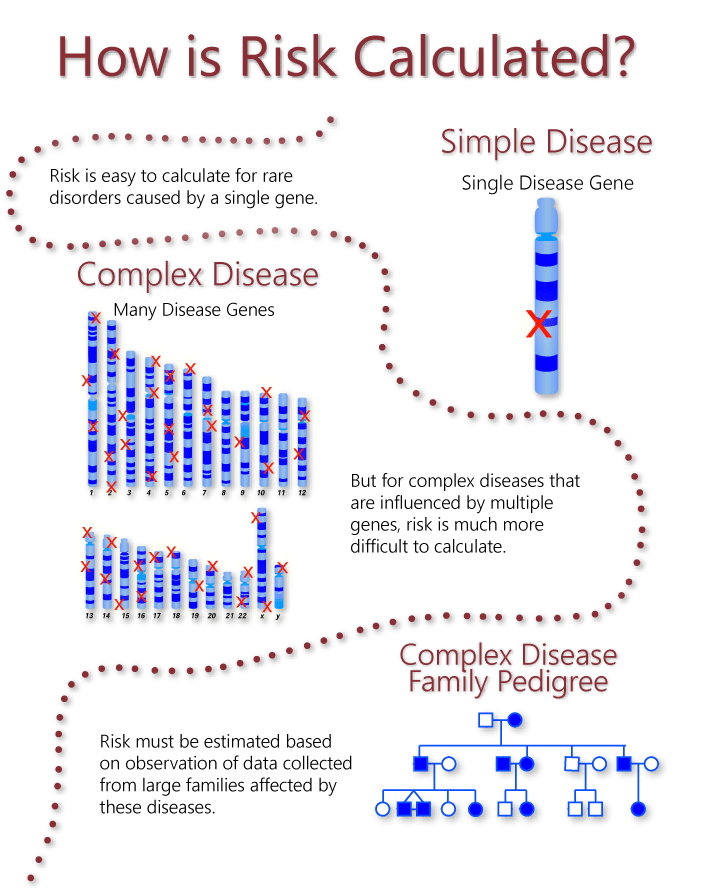Children, parents, and grandparents often share similar health problems. If a particular disease runs in your family, you may have inherited factors that put you at risk.
Inherited risk factors are passed down from parent to child by way of genes. All humans have the same genes, but different people have slightly different versions of these genes.
Sometimes genetic differences cause disease. In rare cases, changing a single gene is enough to cause disease. But more often disease results from the combined effects of minor changes in multiple genes. Each gene then contributes in a small way to the symptoms.
Features of a Family History that Increase Risk
- Having one or more close relatives with a medical condition.
- Having a relative diagnosed with a condition at an early age (typically before age 55).
- Having a relative with a disease that is more rare in a certain gender (for example, a female with heart disease).
- Having a combination of diseases that run in your family (for example, both diabetes and heart disease).


